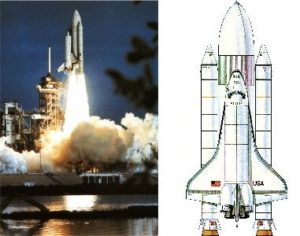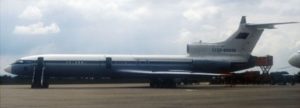“A rocket will never leave the Earth’s atmosphere.” New York Times, 1936
“Every gun that is made, every warship launched, every rocket fired, signifies in the final sense a theft from those who hunger and are not fed, those who are cold and are not clothed.” – Dwight D. Eisenhower
Elon Musk said, “I had so many people try to talk me out of starting a rocket company, it was crazy.”
As long as rockets are fired for peaceful, exploratory purposes, we all are in favor of using them.
After a little sentimentalism, let’s remember our previous story of Russians trying to run trucks on hydrogen. After that, the Russians worked on other hydrogen-fuelled vehicles actually ‘getting off the ground’. (Don’t you love puns? Grrr!) As you might expect, information from this troubled time is sketchy at best; interested readers can glean additional information on Soviet rocketry and their space program at these two links.
In Europe, the ‘Ariane’ rocket, powered by the HM7 hydrogen engine rose to the challenge. France, Germany, and the UK had worked together for a number of years on the European Union’s space program. Development of a series of successful Ariane rockets continued. As of early 2006, this European ‘Model T of rockets’ has ‘uplifted’ 271 satellites into earth orbit in 169 launches. It has achieved a commercial payload record of lifting 8.2 tons into orbit.

Ariane upper stage hydrogen engine – from the book ‘Europe’s Space Program – to Ariane and beyond’, by Brian Harvey
Much like automobiles, the Ariane rockets are being improved, and are now in ‘generation 5’, with number 6 to go into service in 2020 – all being up-lifted with hydrogen fuel, after the initial solid-fuel boosters are dropped.
In 1981 the first flight of the American space shuttle took place. Solid fuel rockets powered the initial lift off, and do so even today. Once altitude is gained, liquid hydrogen and liquid oxygen powers the most sophisticated rocket engines. These are based on 1960’s technology developed in Germany, according to NASA.
Russia, and earlier the Soviet Union, also has a large delivery rocket, the Energija, with liquid hydrogen and liquid oxygen as a fuel, and an orbiter similar to the American Space Shuttle.
Space shuttle at launch and schematic drawing. The shuttle consists of three components: a large external tank to hold liquid hydrogen fuel; two solid rocket boosters; and the Orbiter, which is the space vehicle that holds the crew. The term “Space Shuttle” applies to the entire system but is often used to identify just the Orbiter. Illustration and text courtesy of NASA
“The space shuttle is a better and safer rocket than it was before the Challenger accident.” – Sally Ride, American physicist, and astronaut. She joined NASA in 1978 and became the first American woman in space in 1983.
Obviously, government-derived funding in any country does not have the budget restraint that normally limits industrial companies from reaching their development goals. Space exploration opened the way for today’s progress in civilian transportation (i.e. GPS) and appliance related solutions, as it applies to hydrogen and fuel cells, instead of batteries, for supply of electricity, (as well as other fields, such as computerization etc.) The knowledge and experience gained by NASA and other agencies during these activities of the last generation now benefit all of humanity.
Meanwhile, in the Soviet Union, engineers and scientists had been experimenting with cryogenic fuels –i.e. super-cooled liquid hydrogen– since 1968. Reports or rumors had German rocket scientists from Penemünde assist their captors, much as Wernher von Braun assisted the Western efforts. (He escaped to the west early enough.)
In the spring of 1988, Russian pilots started to test-fly a military plane with the central engine, type NK-88, modified to run on a combination of liquefied hydrogen and liquefied natural gas. The Tupolev plane was based on the passenger aircraft TU154 A/C and TU155 & TU156 (for readers who know planes). One year later, all three engines of type NK-89 were tested with regular and cryogenic fuels. The plane flew at speeds up to 900 km/h and at altitudes of up to 7,000 meters. It was planned and hoped, based on the positive results, that commercial planes could be developed for production after 2010, with similarly fuelled engines.
However, after only a limited number of test flights, the program was stopped, because of the high cost associated with liquefied hydrogen and the lack of infrastructure at airports. Efforts to run the engines on liquefied natural gas (LNG) only, were also terminated.
Illustrations courtesy of Tupolev PSC – notice the 6-axle vehicle in the belly, indicating the plane’s enormous size.
‘Down to earth’ trials continued during the 1980s…with H2 knowledge gained in the air and in space.
Next: Do Hybrids advance Hydrogen & Fuel Cell History?
Comments are closed here.


